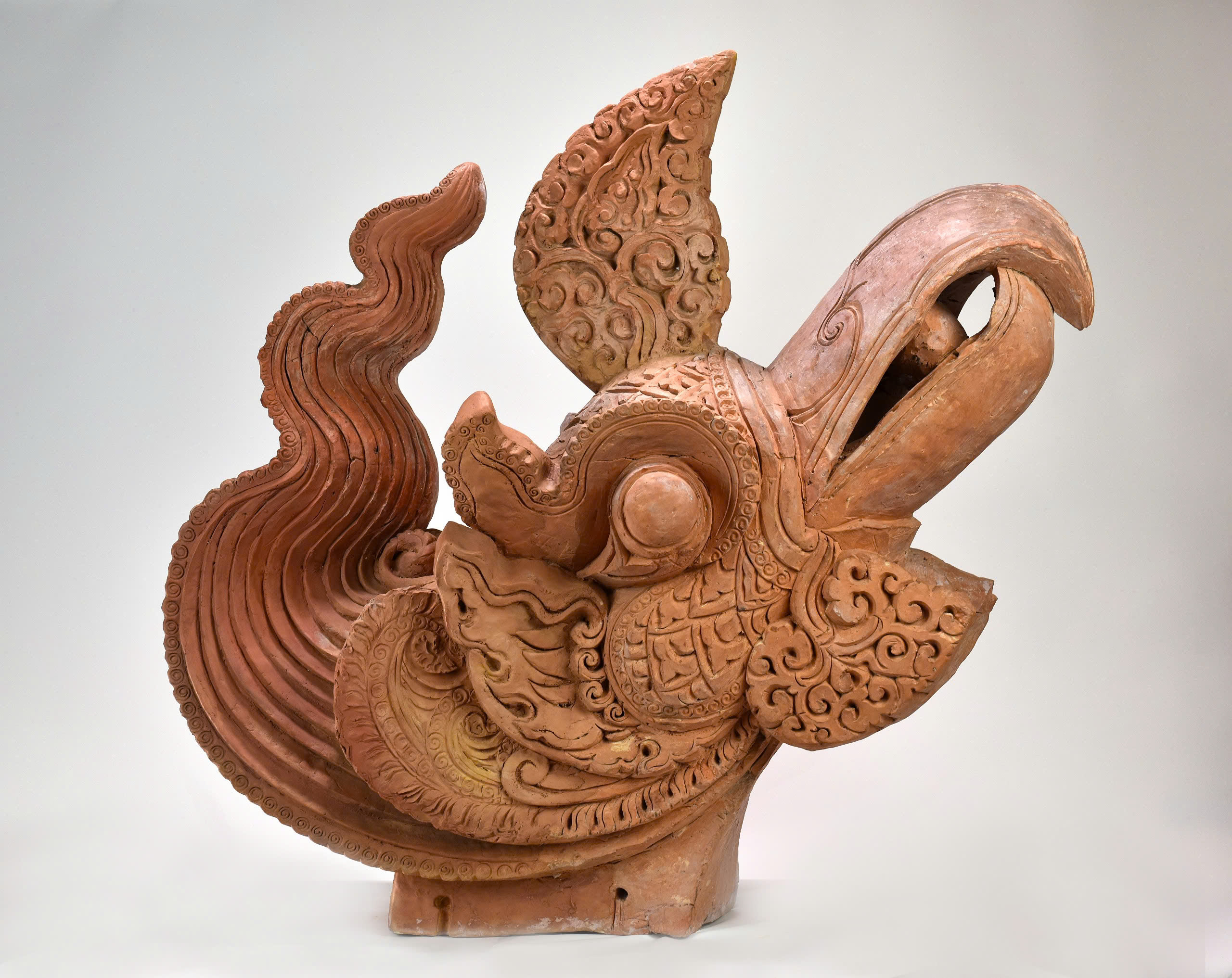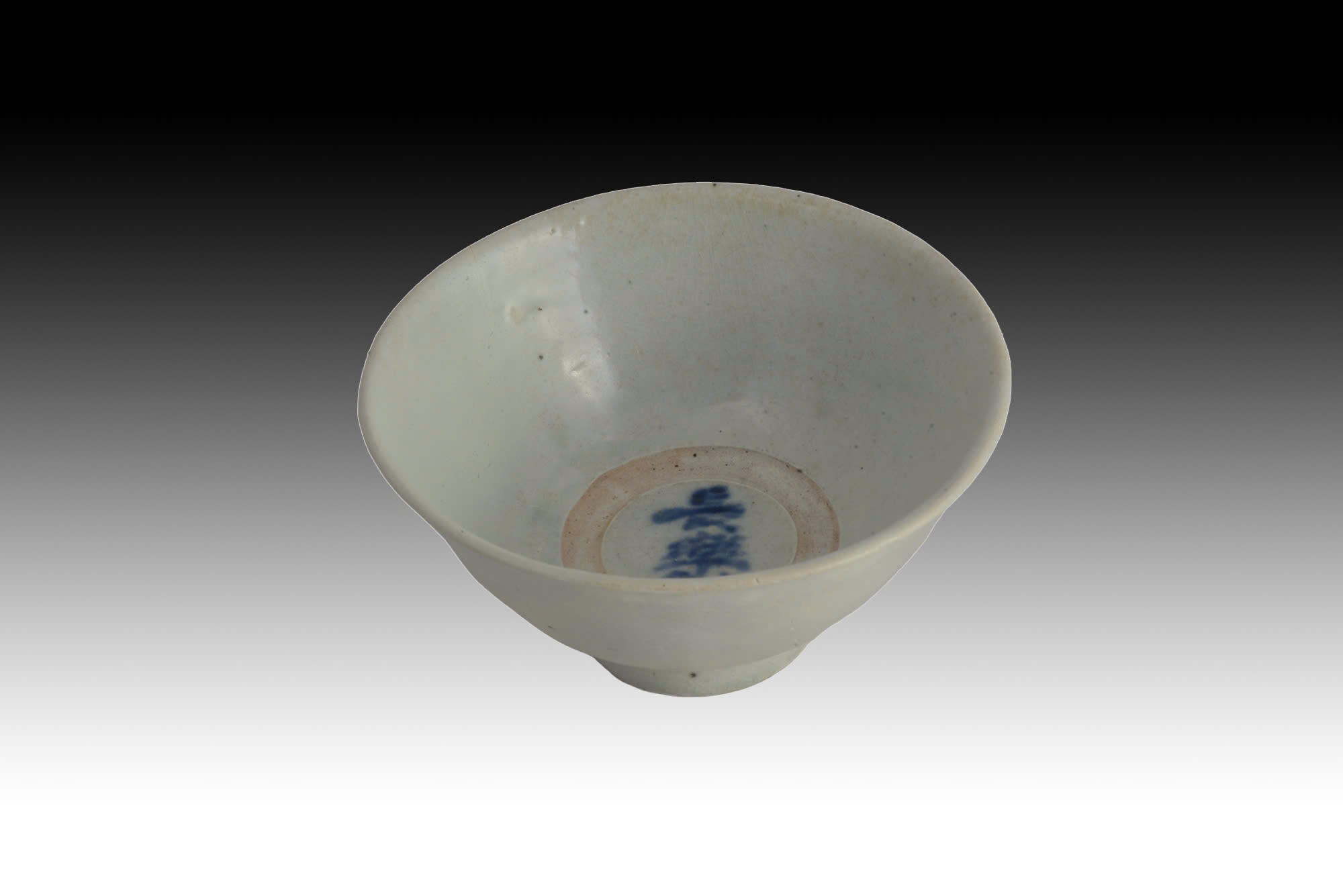National Treasures Recognized at Thang Long Imperial Citadel in 2024
08/01/2025
The Prime Minister has just decided to recognize 33 artifacts and groups of artifacts as national treasures in the 13th phase of 2024. Among them, there are 3 collections of artifacts from the Imperial Citadel of Thang Long – Hanoi.
1. THE PHOENIX HEAD OF THANG LONG Citadel, LY DYNASTY, 11TH AND 12TH CENTURIES – SYMBOLISTIC VALUE OF THE HISTORY OF DAI VIET ARCHITECTURE, LY DYNASTY
The collection of phoenix heads of the Ly Dynasty consists of round statues of various sizes. The phoenix head represents the phoenix in a moving position. The mane moves strongly with many curves, facing forward. The beak is long, the cheeks are wide, the crest is shaped like a skewed lotus leaf, facing forward. The eyes are large, round and prominent, the eyebrows are long and form a strip flying upwards; the large, wide ears are shaped to curve along the movement of the crest and mane.

The Phoenix Head Collection of Thang Long Imperial Citadel is made of baked clay, the fine clay bone shows that the clay used as raw material has been carefully aged and processed before being molded. All the patterns are hand-carved.
The Phoenix Head discovered at Thang Long Imperial Citadel is not only an original artifact but also an important document of value for the study of architectural and sculptural art of the Ly Dynasty in the 11th – 12th centuries.
2. THE EARLY LE DYNASTY VASE, 15th century – EVIDENCE OF THE HIGH DEVELOPMENT OF THE CERAMICS PRODUCTION TECHNOLOGY IN THE EARLY LE DYNASTY.
The Imperial Vase of Thang Long Imperial Citadel has a structure consisting of a bottom, body, shoulder, mouth, spout and handle.

The shape, structure and some decorative motifs of the Royal Vase create the image of a dragon hiding in the vase, in which the vase spout is the dragon’s head. The dragon’s head is shown in a raised position with horns and mane embossed, realistically. The mane on the head is shown flying backwards and spreading out to all sides. The vase handle is shown as part of the dragon’s body with raised fins. Four dragon legs are embossed on both sides of the vase’s shoulders, two legs on each side. The legs depict a strong kicking posture backwards, the muscles are firm, pushing the dragon’s body forward, making the dragon’s body both graceful and strong.
On the vase’s shoulder, in the position between the two dragon legs, there is also an embossed flower with a large pistil and small petals, like beads. This pattern further enhances the hiddenness of the dragon image.
3. COLLECTION OF TRUONG LAC CERAMICS FROM THE EARLY LE DYNASTY, 15TH AND 16TH CENTURIES
The collection of Truong Lac ceramic cups, bowls and plates from the early Le Dynasty, Thang Long Imperial Citadel (hereinafter referred to as the Collection) consists of 36 artifacts of various sizes, including: 9 cups, 6 bowls, 20 plates and 01 plate body fragment.

The Truong Lac ceramic bowls and plates, Le So Dynasty, Thang Long Imperial Citadel nominated are artifacts completely handcrafted, therefore, they are unique and one-of-a-kind products, no other artifact is exactly the same as this one.
RELATED ARTICLES
HERITAGES OF VIETNAM